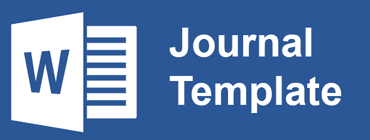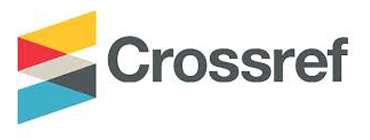THE EFFECT OF PICTIONARY GAME ON THE STUDENTS’ WRITING ABILITY AT THE TENTH GRADE OF MAS AL-HASYIMIYAH TEBING TINGGI
Abstract
Full Text:
PDFReferences
Al-Alusi. Ruh al-Ma’ani Jilid 15. Libanon : Dar al-Kutub al-Ilmiah Ahmad, N. E.Q. (2007). Tafsir Ayat – ayat pendidikan. Bandung: MARJA Ariyanti. (2016). The teaching of EFL writing in Indonesia. Widya Gama
Mahakam University.16.(2). Ary,Donald., et.al. (2010). Introduction to research in education 8th edition. USA: Wadsworth Cengage Learning.
As-Shabuni, M. A. Shafwat at-Tafasir juz 3. Libanon : Dar al-Fikr
Daulay, S. H. (2011). Introduction to general linguistics. Medan: La Tansa Press
Fadhilah, S. 2011. Teaching English concrete nouns using Pictionary game: an experimental study with the fourth graders of SDN 01 Donowangun Talun Pekalongan in the academic year 2010/2011. Thesis. IAIN Walisongo.
Fithriani, R. (2018). Cultural influences on students’ perceptions of written feedback in L2 writing. Journal of Foreign Language Teaching and Learning.
Fithriani, R. (2018). Discrimination behind NEST and NNEST dichotomy in ELT professionalism. In: 1st Annual International Conference on Language and Literature, 18-19 April 2018, Medan, Indonesia.
Gunantar, D. A. (2015). The impact of English as an International language on English language teaching in Indonesia. Journal of Language and Literature. X/2
Hammad, E.A. (2014). Palestinian university-level students’ use of writing strategies in relation to their EFL writing performance. Journal of Basic and Applied Scientific Research. Retrieved from www.textroad.com
Irawansyah. (2016). Genre based approach: a way to enhance students’ writing ability. Jurnal Tadris Bahasa Inggris. 9(1)
Kottler, E. and Gallavan, N. P. (2007). Secret to success for beginning elementary school teachers. California: Corwin Press.
Major, C. H. et. all. (2016). Teaching for learning. New York:Routledge.
Napthine, M. and Daniel, M. (2011). ESL English for year 12. Victoria: Insight Publications.
Noprianto, E. (2017). Student’s descriptive text writing in SFL perspectives. Indonesia University of Education (UPI). 2(1).
Puspitasari, A. (2017). English teaching learning process of writing descriptive text at the seventh grade students of MTs negeri Ngemplak Boyolali academic year 2015/2016. Thesis: State Islamic University of Surakarta
Reddy, M. S. (2016). Importance of English language in today’s world. International Journal of Academic Research .3. 4(2)
Siyoto, S. and Sodik, A. (2015). Dasar metodologi penelitian. Yogyakarta: Literasi Media Publishing.
Syahrum & Salim. (2014). Metodologi penelitian kuantitatif. Bandung: Citapustaka Media Thornbury, S. (2002). How to teach Vocabulary. Essex: Longman.
Tinsman, B. (2002). Game inventor’s guidebook. Iola: Krause publications. Wardani,I., et.al. (2014). Improving the ability in writing descriptive text through guided-questions technique. e-Journal of English Language Teaching Society (ELTS). 2(1)
Wulanjani, A. N. (2016). The use of vocabulary-games in improving children’s vocabulary in English language learning. Transformatika. 12 (1)
Artini, K. J. et.al. (2018). An analysis of learning activities in writing classes based on the curriculum 2013 at SMPN 4 Singaraja. Jurnal Pendidikan Bahasa Inggris undiksha. 5 (2).
Refbacks
- There are currently no refbacks.

This work is licensed under a Creative Commons Attribution-NonCommercial-ShareAlike 4.0 International License.
INDEXING
Bright Vision by UIN Sumatera Utara Medan is licensed under a Creative Commons Attribution-NonCommercial-ShareAlike 4.0 International License.
Based on a work at http://jurnaltarbiyah.uinsu.ac.id/index.php/brightvision.









